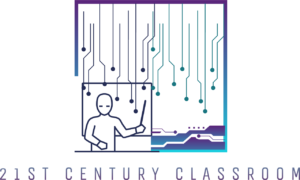In today’s software-driven world, the role of a quality assurance (QA) tester is crucial in ensuring the reliability and functionality of software applications. As the demand for skilled QA testers continues to rise, it’s essential to build actual experience in this field. This blog aims to provide a comprehensive guide on how to develop your QA tester experience effectively.
I. Understanding the Role of a QA Tester
- Definition and responsibilities of a QA tester: Begin by explaining the role of a QA tester, highlighting their responsibilities in the software development lifecycle.
- Key skills and qualities required for a QA tester: Discuss the essential skills, such as attention to detail, analytical thinking, and strong communication, that are vital for success in this role.
- Exploring different types of testing: Provide an overview of various testing methodologies, such as functional testing, regression testing, performance testing, and usability testing.
II. Gaining Theoretical Knowledge
- Formal education and certifications for QA testers: Discuss the educational pathways available for aspiring QA testers, including relevant degree programs and certifications.
- Relevant academic courses and programs: Highlight specific courses or programs that can provide a solid theoretical foundation in QA testing.
- Online resources and self-learning options: Provide a list of reputable online platforms, tutorials, and resources that individuals can utilize to enhance their theoretical knowledge in QA testing.
III. Practical Experience through Projects
- Participating in open-source projects: Explain the benefits of contributing to open-source projects, including gaining hands-on experience and collaborating with other developers.
- Contributing to bug tracking and reporting: Emphasize the importance of actively participating in bug tracking and reporting, showcasing how this contributes to practical experience.
- Collaborating with development teams and attending stand-up meetings: Highlight the significance of working closely with development teams, attending meetings, and understanding the software development process from start to finish.
IV. Test Case Creation and Execution
- Understanding the importance of test case documentation: Explain why thorough test case documentation is essential for effective QA testing.
- Creating effective and comprehensive test cases: Provide practical tips and best practices for creating test cases that cover various scenarios and edge cases.
- Executing test cases and reporting bugs accurately: Guide readers on how to execute test cases diligently, record results, and report bugs accurately using bug tracking tools.
V. Automation and Tools for QA Testing
- Overview of popular automation frameworks: Introduce popular automation frameworks like Selenium and Appium, explaining their benefits and areas of application.
- Learning programming languages for automation: Suggest programming languages such as Python or Java that are widely used in QA automation and recommend resources for learning them.
- Exploring test management and bug tracking tools: Provide an overview of common test management and bug tracking tools like JIRA and TestRail, highlighting their features and benefits.
VI. Networking and Industry Involvement
- Joining QA testing communities and forums: Encourage readers to engage with online communities and forums where they can connect with other QA testers, seek advice, and share experiences.
- Attending industry conferences and events: Highlight the value of attending industry conferences and events to expand knowledge, network with professionals, and stay updated on the latest trends.
- Leveraging social media platforms for professional networking: Recommend utilizing platforms like LinkedIn and Twitter to connect with industry experts, join relevant groups, and share insights.
VII. Building a Strong Portfolio
- Showcasing completed projects and contributions: Guide readers on how to create a portfolio that highlights their completed projects, contributions to open-source projects, and relevant experience.
- Highlighting relevant skills and achievements: Assist readers in identifying and showcasing their most relevant skills, certifications, and achievements in the QA testingfield.
- Creating an online presence: Provide tips on building a personal website or optimizing a LinkedIn profile to enhance online visibility and attract potential employers.
VIII. Continuous Learning and Professional Development
- Staying updated with industry trends and technologies: Encourage readers to stay informed about the latest advancements in QA testing through blogs, industry publications, and online resources.
- Pursuing advanced certifications and specialized training: Highlight the importance of continuous learning and professional development, including pursuing advanced certifications or specialized training programs.
- Engaging in ongoing learning opportunities: Recommend attending workshops, webinars, and online courses to expand knowledge and keep skills up to date.
Takeaway
Building actual QA tester experience requires a combination of theoretical knowledge, practical application, and continuous learning. By understanding the role, acquiring theoretical knowledge, gaining hands-on experience, leveraging automation tools, networking, and emphasizing professional development, you can lay a strong foundation for a successful career as a QA tester. Remember, building experience takes time and dedication, so stay committed to learning, refining your skills, and embracing new opportunities to grow in the field of QA testing.

